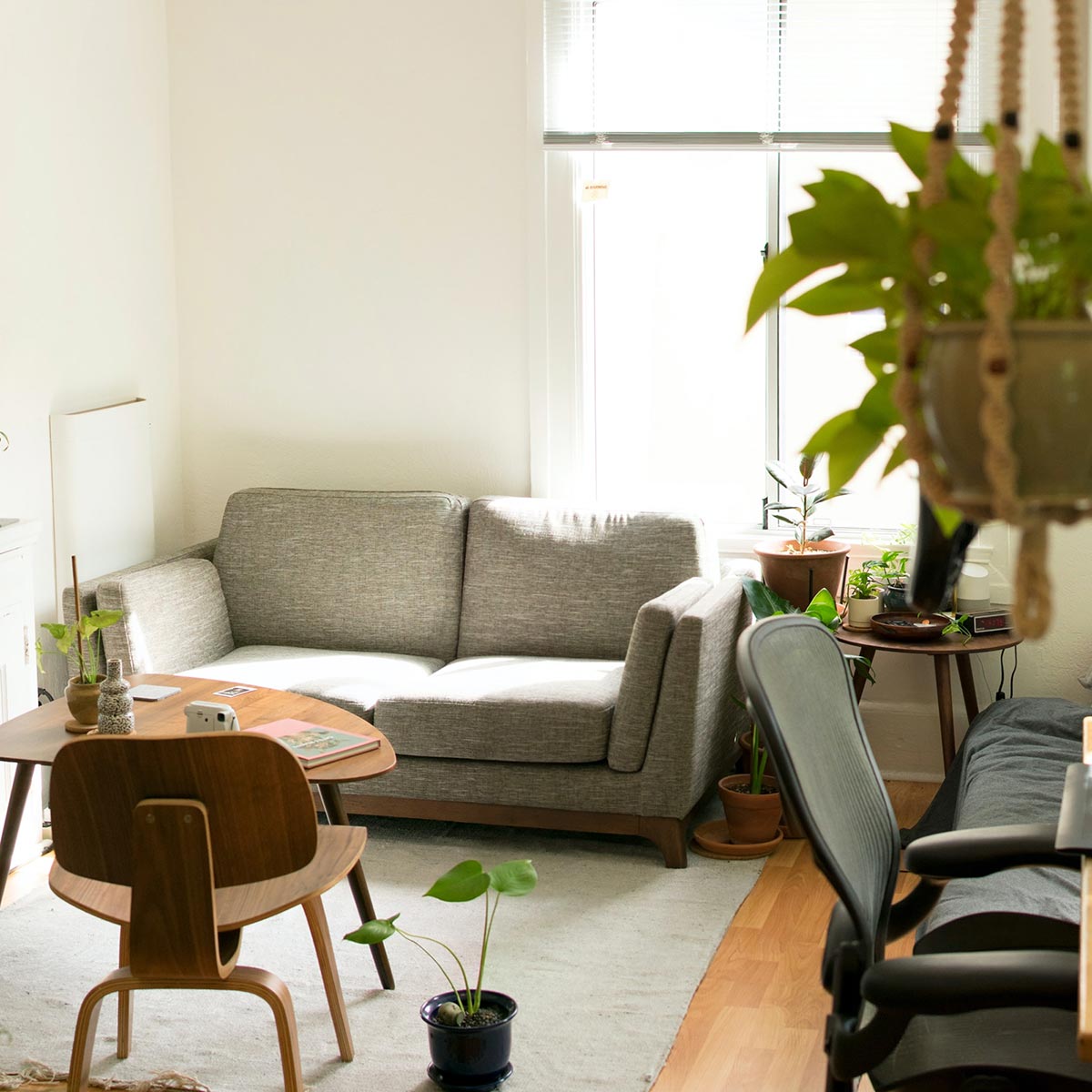Komal Vij
Enrich Mortgage Group
Contact Info:
About
Languages:

Specialties
Self Employed
Borrowing money is harder for many self-employed Canadians. While there is broad recognition that self-employed Canadians are reliable borrowers, it may be difficult to navigate the mortgage process and the different options available specifically for this group. We can help turn the tables. These individuals may run their own businesses, or work in a profession where the main source of their income is predominately capital gains, a form of income that is generally not considered by most “A Lenders”.
We work with self-employed homebuyers every day and understand the challenges that they may face when arranging a mortgage especially with no standard proof of income. Our brokers are experts when it comes to mortgage solutions and have access to multiple options, including mortgage products designed specifically for self-employed Canadians. They can pinpoint which lenders have more favourable terms and requirements and advise you on how you can improve your options to get the best possible rate and terms.
The more complex your mortgage situation, the more sense it makes to use an experienced mortgage professional who can help simplify the process and help you achieve both your short-term objectives and your long-term financial plan. Most of all, they allow you to stay focused on your business, alleviating the burden of many time-consuming and frustrating tasks and meetings associated with securing a mortgage and will also work around your busy work schedule. Many will even travel to your work site if required to make the transaction as convenient as possible for you.
Remember, that independent mortgage professionals work for YOU, not the lenders or banks, so you can rest assured that their advice is unbiased and in your best interest when it comes to finding the right lender and right product to meet your needs. Find out what your options are, give us a call.
Residential Mortgages
If you are a first-time homebuyer, getting professional mortgage advice is a great place to start. We specialize in the kind of education that can help get new homebuyers off to a great start! Although mortgage debt is 'smart' debt, buying your first home is a huge financial decision and there is a lot to think about. It's one of the most important financial decisions that most Canadians will make in their lifetime.
You want to take advantage of today’s low rate environment but it can be overwhelming to sort through all of the options out there. Your Mortgage Broker will help get you the right combination of mortgage features, privileges and rate that is best matched to your needs. The right mortgage goes beyond just the rate–it’s important to also consider term, prepayment options, refinancing penalties, restrictions, and fees.
Determine what you can afford. Before you start shopping for a home – and long before you consider putting an offer on one – let us help you determine how much home you can comfortably afford. Having a realistic budget to start will bring you confidence, knowing that you are not overextending yourself. Remember that home ownership involves costs beyond the monthly mortgage payment such as utility bills, insurance, taxes, home upkeep.
Be sure to talk to us about getting pre-approved, so you’ll get your interest rate guaranteed for a set period, typically 90 to 120 days.
Downpayment options. Downpayment is one of your most important considerations before you look to purchase your new home. If you’re in the “saving up” stage of preparing for home ownership, this is a great time to meet with us so we can discuss your downpayment options. In most cases you want to save five percent of the purchase price. Five percent down is required on homes up to $500,000.
For any home over $500,000 but less than $1 million, you need 5% downpayment on the first $500,000 and ten per cent for any amount over that. If your purchase price is $1 million or more, a minimum 20% downpayment is required.
Build a team of professionals. We’d be happy to help you build a strong away team so that all aspects of your home buying experience are efficient and professional. Your team will include a realtor, lawyer, and a home inspector.
Plan for closing costs. There are additional costs that come with buying a home so you’ll need to have some extra funds set aside to cover these costs. Generally, you can expect to pay between 1.5% and 4% of the home’s selling price in total closing costs. Your mortgage broker can outline all of your closing costs so you won’t be caught by surprise.
Your Mortgage Broker will also provide strategies to help you pay your mortgage off faster and shave thousands off interest costs.
There’s so much to consider. Work with your mortgage broker today so you can get into the market and start your wealth building with smart debt! Your mortgage broker will help you get off on the right foot in your home buying journey.
Rental Property / Investment
Are you considering buying a multiplex property in the near future to enter the rental market? While this type of investment is a great way to diversify your income and put money aside, it is important to be well prepared. Buying income-producing real estate is more than an investment, it also means starting a business. But where should you begin? Before you get started, it is important to quantify and analyze the financial implications to ensure that your project is viable and profitable. The return on investment is calculated by subtracting the operating expenses from your income. This amount is then divided by the down payment on the building. The percentage obtained represents the annual return, which should ideally be higher than the mortgage rate.
Another aspect to consider is your ability to manage risk. Rental real estate does not guarantee constant profits, so it is important to assess your tolerance for risk and financial uncertainty.
The financial aspect is not the only aspect to consider. When entering the rental real estate market, you have to manage tenants and take care of the building maintenance. It is therefore important to be familiar with tenants’ rights in Québec and to have an interest for manual work. This will greatly help!
The down payment required for your project will depend on the number of units in your plex and whether you want to live in the building. Usually, you need a down payment equal to 20% of the property value. However, if you intend to live in one of the two apartments of a duplex, the required down payment is 5% and that will increase to 10% in the case of properties with 3 or 4 units.
Mortgage Alliance brokers are there to help you make the right decisions. They can give you advise and guide you through the investment process. Contact us today to start making your project a reality.
Alternative Lending
With the ever-changing market and a stricter stress test, many Canadians are finding it harder to qualify for a mortgage through traditional financial institutions “A-Lenders” and are turning to alternative lending solutions for their mortgage. At Mortgage Alliance we work with many alternative lenders, who can offer excellent mortgage options with more flexible criteria and more lenient qualification requirements.
Alternative lenders are great for individuals who have non-traditional forms of income for example, capital gains, room rental income, child tax benefits and others or for self employed applicants who may not have the minimum required number of years being self employed.
These lending solutions are also a good option for those with lower credit scores. While the rate they offer is slightly higher than what you will see posted by an A-Lender, they are nothing out of the ordinary when compared to traditional rates posted in Canada. They also generally have shorter terms, meaning that you can get into the home of your dreams while being able to rebuild your credit at the same time.
Buyers who don’t qualify under the mortgage stress test can also take advantage of the expanded debt service ratios allowed by alternative lenders to qualify for a mortgage and get into the home of their dreams. If you have a very unique situation, we also have access to various private lenders who are even more flexible and lenient in requirements and may be able to offer you mortgage options that fit your situation. In today’s environment, we’re seeing more private lenders helping Canadians with their mortgages.
Call your Mortgage Alliance professional to find out about the different options available to you. They are experts when it comes to mortgage products and different solutions and will provide you with unbiased advice. They work for you, not the lender.
Bad Credit
Your credit history is integral when it comes to the mortgage approval process because that history is a reliable indicator of how you will manage your mortgage and your finances in the future. Your credit score is calculated using information in your credit report including your payment history, how much debt you're carrying and the length of your credit history. Lenders use the score to helps determine the risk and your creditworthiness when you apply for a loan. Credit scores above 660 are generally considered good, very good, or excellent. These individuals receive lower rates, and can get loans easier than those that do not fit into this range.
Those with less than average scores or with lower scores who fall into the “poor” credit range may face higher interest rates, difficulty getting better loan terms or qualifying when applying for a mortgage. Buyers with poor credit may have to put down a larger initial down payment or require a co-signer to be able to qualify for the mortgage they need to get into their dream home.
Your mortgage professional can review your situation and coach you on how best to improve your credit over time. That's why it's a good idea to talk to a mortgage broker as soon as you can. As your good credit history becomes established, your borrowing options will increase. If you wish to get a mortgage while you work on bettering your score, we can help!
At Mortgage Alliance we are committed to helping Canadians realize their dream of home ownership. Our brokers have access to many lenders, from banks to private lenders, and a multitude of mortgage solutions. Even if you have poor credit, you have options and our brokers will work with you to find the right solution that best meets your needs. Call for a free consultation.
First-Time Home Buyer
Here's to buying like a pro the first time!
Buying your first home is one of the most important financial decisions you'll ever make and getting the right advice from a mortgage professional is a great way to start.
Before you start looking for your dream home, your Mortgage Alliance professional can help you find out how much you can qualify for so you can shop with confidence. They'll explain the process and even assist in getting you a mortgage pre-approval so you can take advantage of today’s low rate environment by locking in today’s rate for you for a set period of time, typically 90 to 120 days.
Understanding your down-payment options is important as you get ready to buy your first home. This is right time to consult with your mortgage professional who can explain the requirements and options available to first-time buyer only when it comes to down-payment. Generally, the min down-payment required depends on the purchase price with the min being 5% down. For homes $500,000 and under 5% down is the min required. For homes over $500,000 but less than $1 million, you need 5% down-payment on the first $500,000 and 10% for any amount over that. If your purchase price is $1 million or more, a minimum 20% down-payment is required. Mortgages with less than 20% down are subject to default insurance which is usually added to the mortgage amount.
At Mortgage Alliance, we work with over 60 lenders from major banks to private lenders. Your mortgage professional gives you access to multiple lenders and finds the right mortgage for you with only one application. They help you navigate the process, explain your options and present you with mortgage solutions that best meet your need. Having the right combination of mortgage features, privileges and rate is key. The right mortgage goes beyond just the rate--it's important to also consider term, prepayment options, refinancing penalties, restrictions, and fees.
Your mortgage professional will not only find the right mortgage for you but also provide strategies to help you pay your mortgage off faster and shave thousands off interest costs in the process.
New Canadian
If you're new to Canada and looking to buy a home of your own, we are here to help get you there sooner!
As you transition from renter to owner, seeking the advice of a mortgage professional is a smart move that can help make the transition easier. Your Mortgage Alliance professional will help streamline the mortgage process for you, explain the requirements and present you with the options available to you. If you have any questions, your mortgage professionals is there for you every step of the way.
Generally, the most important factors for new to Canada financing are credit history, and down-payment.
It is a good idea to start establishing credit in Canada as soon as you can. Not everyone may be where they need to be when they first meet with a Mortgage professional. Your Mortgage professional can take the time to coach you on what you can do to help build your credit. If you do not have established credit, they can show you have built credit by providing specific supporting documentation such as a credit report from your country of origin, proof of rental payments, proof of utilities payments, proof of income and others. In terms of the down-payment, a five percent of the purchase price is the minimum although a larger down payment may be required. If you are a non-resident, a 10% down-payment be be required. It is also important to remember that homes over $500,000 require 10% for every dollar between $500,000 and $999,999. Any mortgage over 1 million dollars will require 20% down payment.
Mortgage professionals also work with a large range of lenders and products, which makes them more likely to be able to find the right solution for your situation.
You can rely on your mortgage professional to help outline all the requirements and advise you on the paperwork you need to assemble to apply for a mortgage. Call for a consultation or to get the process started.
Preview Our Rates
Access all your mortgage options with just one application. Preview today's rates first:

Stay Connected
Subscribe to our Newsletter and you'll stay up to date on rates that help you save thousands in interest.
